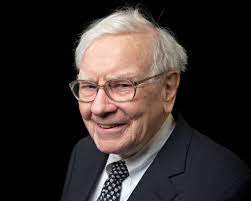Optimizing Berkshire’s Cash Allocation: A Closer Look at its Fluctuations
When it comes to cash allocation, Berkshire Hathaway has shown a tendency to fluctuate within a narrow range rather than maintaining a constant allocation. In this article, we will delve into the reasons behind these fluctuations and explore the impact they have on the company’s overall financial strategy.
Understanding Berkshire’s Cash Allocation
The fluctuating nature of cash allocation
Berkshire Hathaway, under the leadership of Warren Buffett, has never been one to stick to a rigid cash allocation strategy. Instead, the company has embraced a more dynamic approach, allowing for fluctuations within a narrow range. This flexibility allows Berkshire to adapt to changing market conditions and seize investment opportunities as they arise.
The rationale behind fluctuation
One of the primary reasons for Berkshire’s fluctuating cash allocation is its commitment to value investing. Buffett and his team are constantly on the lookout for undervalued companies or assets that can generate substantial returns in the long run. By maintaining a certain level of cash reserves, Berkshire is able to pounce on these opportunities when they present themselves.
Market timing and risk management
Fluctuating cash allocation also plays a crucial role in Berkshire’s market timing and risk management strategies. By keeping a portion of their funds in cash, Berkshire can take advantage of market downturns and purchase assets at discounted prices. Additionally, having cash reserves acts as a buffer during times of economic uncertainty, providing a safety net against potential losses.
Balancing liquidity and opportunity cost
While holding cash reserves provides Berkshire with liquidity and financial stability, it also comes with an opportunity cost. Cash sitting idle means missed investment opportunities and potential returns. Therefore, Berkshire aims to strike a balance between maintaining an adequate level of liquidity and deploying capital effectively to generate maximum returns.
Conclusion
Berkshire Hathaway’s cash allocation strategy has proven to be a dynamic and adaptable approach. By allowing for fluctuations within a narrow range, the company can capitalize on investment opportunities, manage risks, and maintain financial stability. This optimized cash allocation strategy aligns with Berkshire’s value investing philosophy and ensures the company remains well-positioned for long-term success in the ever-changing market landscape.


